While we don’t spend a lot on our entertainment budget line item monthly, we invest heavily in our vacation sinking fund. Call us minimalists, but we value experiences over objects, and thus align our budget with that priority. While we love to travel, we don’t enjoy overpaying. The more we spend on each trip, the fewer trips we get to take. When I started The Budget Brigade, my husband told me I should focus on traveling on a budget. Write what you know, as they say. So while we drove across the flat plains of Kansas, I took a break from counting tumbleweeds to cover some of our tips to road trip on a budget.
How to road trip cheap on a budget
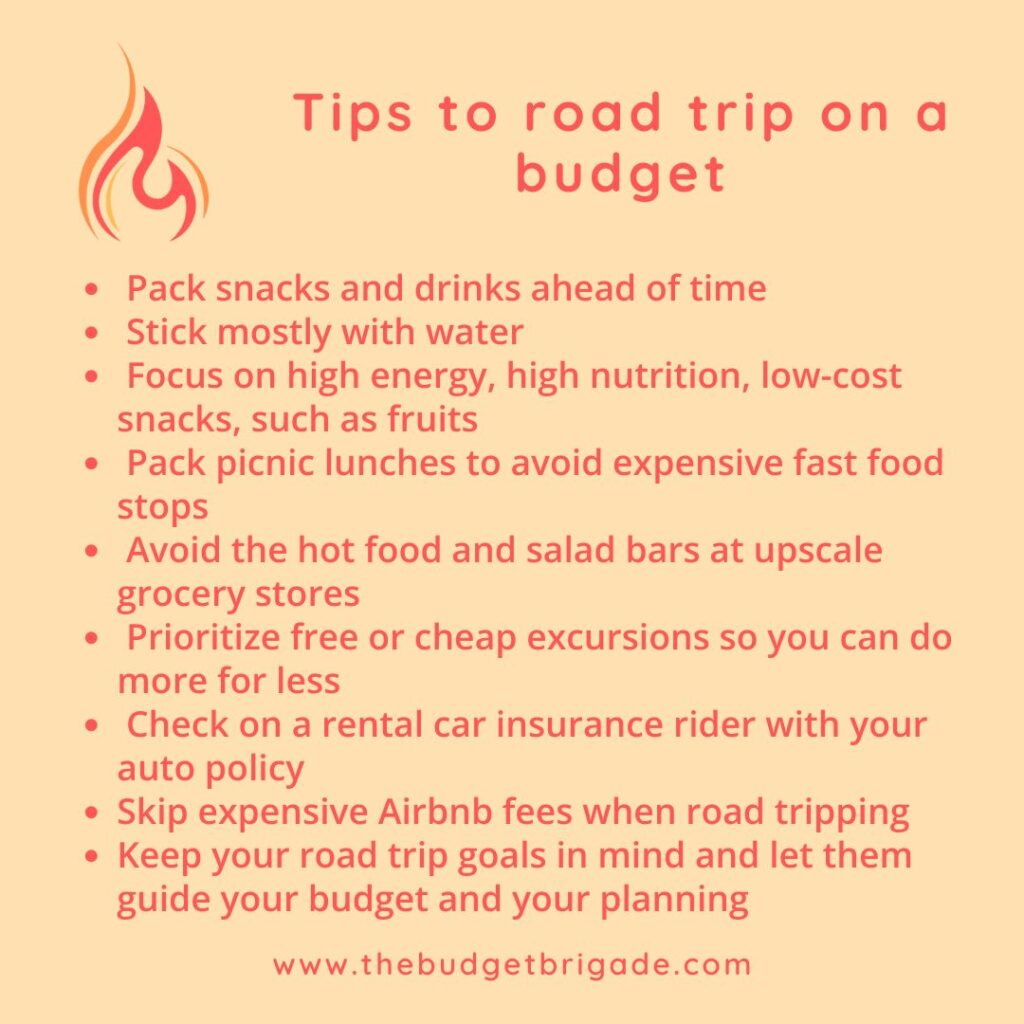
Eating cheap to road trip on a budget
We aren’t foodies, but we do like to make sure we don’t get hangry when locked in a car together in the middle of nowhere. We also like to try new experiences, so eating on a road trip can cut deeply into our vacation budget.
We have a three-tier approach to tackle food on the road.
Pack drinks and snacks ahead of time
Buying a six-pack of Gatorade or soda at Walmart before you leave will be less than half the cost of buying six cold Gatorades from the coolers at Buc-ee’s along the way. Depending on how far we’re road tripping and how often we’re changing lodgings, we either pack a large cooler or a small lunchbox or two. The drinks we’ll want or need during the day, we keep on ice in the cooler or with ice packs in a lunchbox.
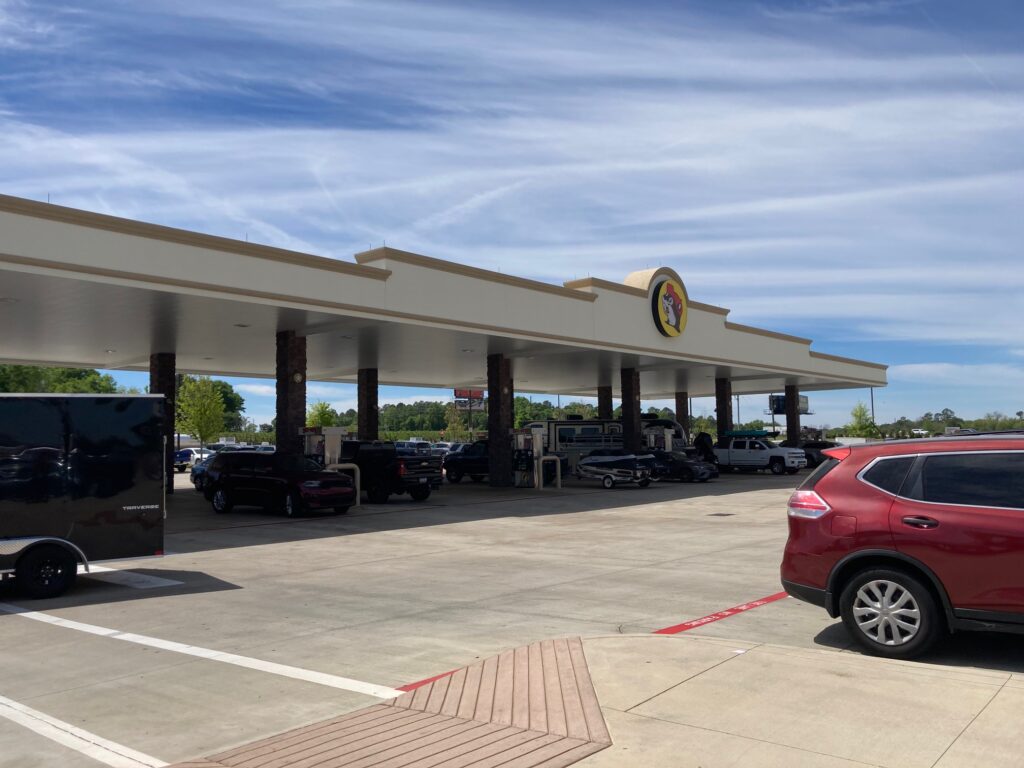
If we’re running low on space for chilled items, we’ll leave the drinks out. While cold is nice, warm Gatorade or Vitamin Water won’t kill us. But paying $3 for a 20oz kills our vacation sinking fund quickly.
If we’re doing a lot of hiking, especially in the summer, we pack our $10 bladder backpacks and buy filtered water by the gallon to save money versus bottled water.
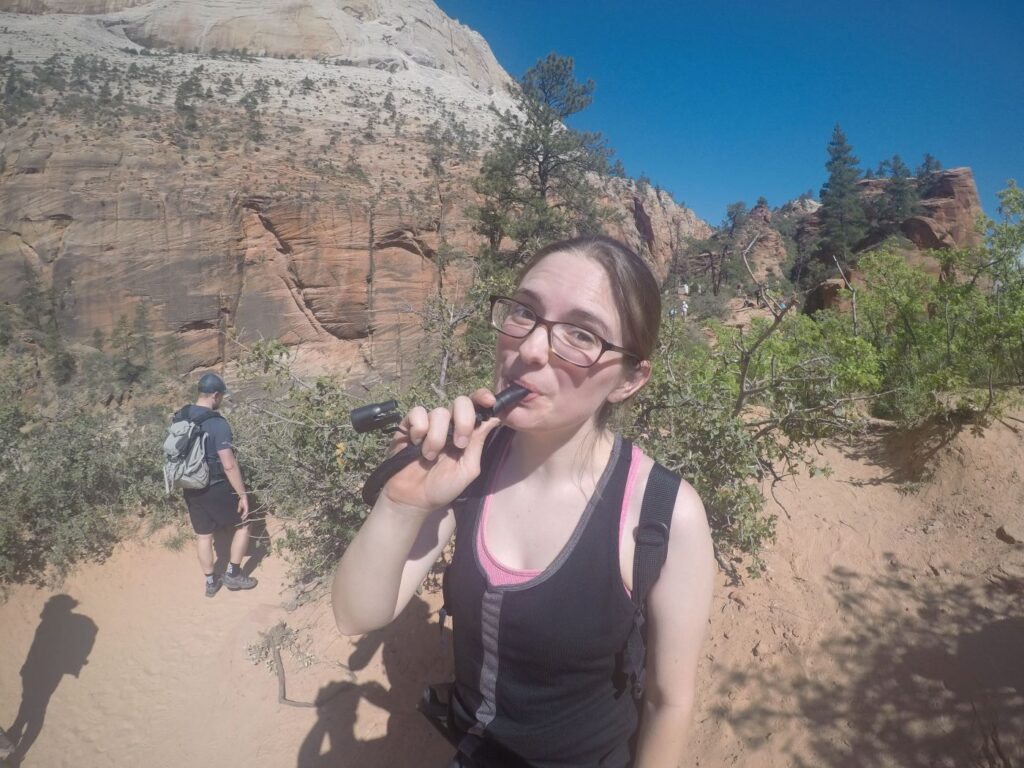
Not only is bottled water insanely expensive at gas stations, but even packs of 16oz bottles can add up quickly. We keep an empty Gatorade bottle or water bottle each when we’re doing shorter day hikes or urban exploring so we don’t have to lug around a full gallon, which we leave in the car. Make full use of bottle refill stations, too.
For snacks, we try to be mindful of what we buy. While my husband loves jerky, it’s expensive, so it isn’t a grab a bag every day snack. He usually splurges for the first day on the road or for the longest hiking day.
We focus on high energy, high nutrition, low-cost snacks, such as fruits. Bananas and apples are great snacks for hikes. Oranges require a little more attention to leave no trace, but we always keep an empty plastic grocery bag in the car for trash and an empty freezer quart bag in a backpack for banana peels. We don’t need anyone hiking behind us spinning out like they’re playing Mario Kart.
If we need protein bars, we buy them (or make them) in bulk ahead of our trip. Removing them from the box lowers the amount of space required to pack them, and we portion them out by day. Fake “fruit” snacks, nuts, and Jell-O are other bulk options to consider for cheap snacks. We lean toward nuts, as they are more nutritious and thus keep us feeling fed and less dead on the trails or while walking around new cities.
Nothing beats sitting at the end of a trail after a long, sweaty hike and enjoy the overlook view while you eat a backpack picnic. Just remember to take your trash back with you. Especially in Zion, because those squirrels are no joke.
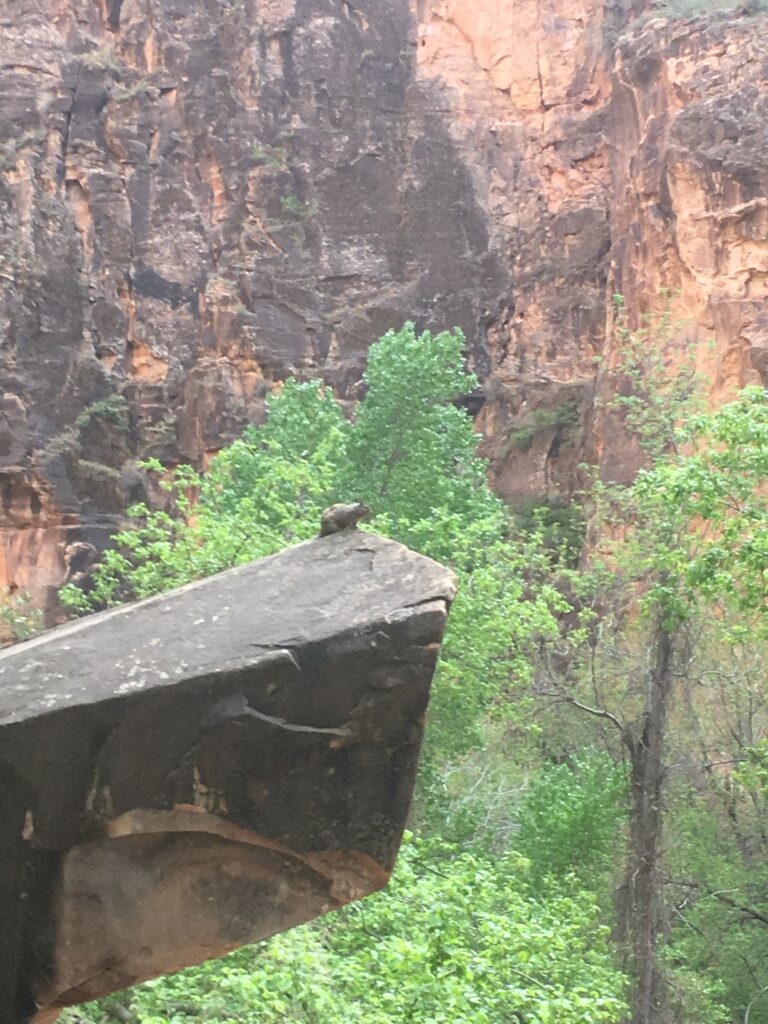
Plan fast foods and restaurants intentionally
While it’s easy to detour off the interstate to grab some Chick-fil-A or Raising Cane’s, these quick trips add up quickly, especially when you’re road tripping with a larger family.
Instead of hitting up the double arches for double stomach aches, we pack picnic lunches.
With my gut issues and limited diet of what doesn’t make Gus Gus my gut run screaming off the side of a cliff, I like to prep salads with lettuce, cucumber, lemon-lime dressing, and chicken, which gets priority in the lunchbox or cooler over drinks. I also do rice cakes and sunflower butter. Before my gut issues, a good old PB&J worked great. My husband often buys bread, lunch meat, sliced cheese, and condiments and makes sandwiches. Buying these in bulk saves a lot versus grabbing pre-made subs in the deli section of the grocery store. Though we still prefer snagging those for long days in the car versus stopping for combo meals at Subway or sit-down lunches.
When in Rome, eat like the Italians—we throw no shade on this concept. On our recent exploration of Kansas City, you bet your ass we researched the best BBQ and headed over to Joe’s, a BBQ joint that turned out to be attached to a gas station convenience store.
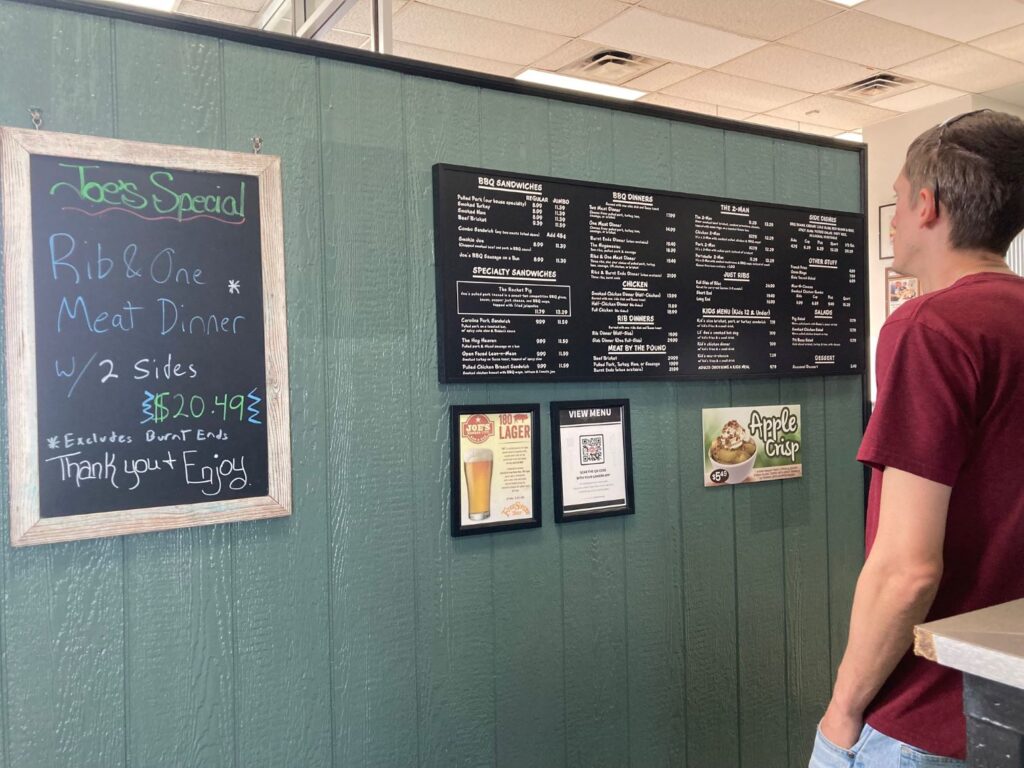
My husband got a specialty pulled pork sandwich with fried jalapenos, which siren song called to him as soon as we spotted the menu. I got the smallest serving of pulled pork by the pound. We knew ahead of time we wanted to get BBQ in Kansas City, so we planned dinners in the hotel rooms in Arkansas beforehand and in Colorado after to balance out the cost. When we got super fancy sushi in Washington, D.C. and Italian in San Francisco, we did grocery store dinners for the rest of our stays in those towns to counteract the $100 bills.
Pro tip: avoid the hot food and salad bars at upscale grocery stores (I’m looking at you, Whole Foods). It often turns out just as expensive as a trip to grab fast food. Our most recent experience proved that $15 pizza doesn’t taste any better, especially if it’s been sitting out for a hot minute. Stick with picnic lunches instead.
Get creative with hotel cooking
When I got my pulled pork in Kansas City, I supplemented it with rice I made back at the hotel in my mini rice cooker, along with canned carrots and steam-in-a-bag broccoli we snagged at Walmart. While this was because I couldn’t eat anything with dairy or gluten in it, it also helped us save money on expensive sides to stretch our budget.
While we like to try the local cuisine, we don’t hit it up every single day for every meal, especially when we’re spending more than one day in the same area. We pick one or two local joints, then supplement the rest of the meals with cheaper alternatives. Not only does this help prevent us from delivering a food baby on the trails, it helps stretch our vacation fund immensely.
It takes a little more time, but we implement behavior coupling. I prep the rice and cook chicken breasts on a hot plate or heat frozen chicken strips in the microwave while listening to my road trip audiobook of choice. My husband showers while I cook so the time isn’t wasted. Then I shower while he cleans the dishes or finishes unpacking the car or tending to the Budget Beagle’s dinner and post meal walk and squat.
I try to limit our hotel cooking setup to a rolling duffle bag when changing hotels every night. A peek at what I often pack when road tripping:
- My smaller Ninja bullet for breakfast fruit smoothies
- Nut or seed butter for smoothies
- A few key spices like salt, pepper, Italian seasoning, and cumin
- One kitchen knife
- A small cutting board
- Two glass food containers (that can Russia nesting doll stack inside each other) and one large plate for leftovers and food heating requirements
- Freezer, quart-sized plastic bags
- A hot plate
- Small rice cooker
- Russian nesting doll measuring cups
- A sponge, small bottle of dish soap, and drying towel
It might seem like a lot, but it fits well in our duffle bag. I stack things within each other to make the most of the space.
If you’re exhausted at the end of a long day and don’t want to spend time cooking at the hotel, plan ahead. Meal prep and pack the cooler. Buying bags of ice to keep things cold is still a lot cheaper than eating out every night on the road. Just make sure your food containers are sealed and water tight so that you don’t end up with soggy salads at the end of the day. (Ask me how I know.)
Prioritize free or cheap entertainment options
One of the best parts of doing a road trip is getting to explore different areas and attractions. But what you choose to do directly impacts how much you can afford to do. We thus prioritize free or cheap options so that we can do more for less.
This doesn’t mean we don’t do anything fun. But each decision comes with an opportunity cost, and we keep that in mind as we plan our road trip and activities. If we know there’s something really special we want to do, like take a seaplane down to Dry Tortugas National Park, then we know we need to find free things to do the other days we road trip down to Key West.
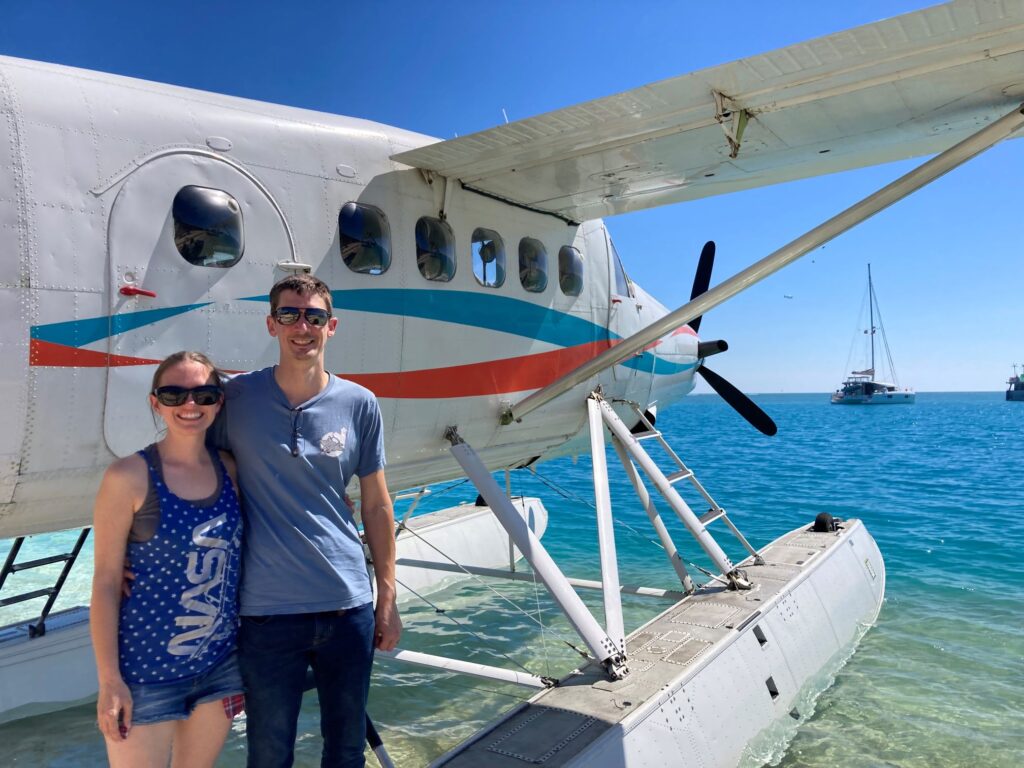
We have a lot of different hiking and trail apps and love exploring national and state parks. It’s a great way to see nature and stretch our legs after long days in the car. We also like to go to museums, but they can add up quickly, so we research ahead of time. When we found out the National WWI museum was in Kansas City, we spent the money to go to compliment the WWII museum exploration we did on our NOLA trip. Since our budget for this particular road trip was tight, we skipped the add-on exhibitions and movies to save money this time. Then we found free state parks to explore the day before and after.
For our honeymoon, we stayed right next to Six Flags near Sonoma for the first night. While we enjoy thrill rides and theme parks, we also knew we wanted to do the duck tour a few days later in Seattle, so we skipped the roller coasters.
Sure, it might have been more fun to do all the things that interested us. But the spending hangover usually isn’t worth it. By being intentional with our entertainment spending, we ensure we focus our time on what we’re really excited to do, which brings us that much more joy when we finally arrive and knock the pens and needles out of our dead legs from being jammed in the hatchback for 200 miles.
Rental cars and coverage
We often fly into a large international airport, rent a car, and then hit the highway toward the roads less traveled. For years, the rental car companies successfully employed scare tactics and convinced us to add on the supplemental rental car coverage for “loss of use” and other potentially expensive repairs from accidents.
While changing our car insurance from Florida to Colorado for our move, my husband told me to ask about a rental car insurance rider. For $5 a month, we added insurance that allows us to decline the daily coverage at the rental car counter. If we rent a car for two days all year, it saves us money. Since we usually have 5-10 rental car days a year, it was a no brainer to add this coverage.
We’re also modest in which car we reserve. While the Acadia we got upgraded to for our Rocky Mountains road trip was amazing, we usually opt for the cheapest four door sedan. The extra space is nice, and makes it easier to pack the car, but the higher cost adds up quickly on road trips.
Skip the Four Seasons
Similar to rental cars, be modest when planning your lodgings. While Airbnbs can be awesome, when you’re road tripping and changing places every night, the fees become insane. Hotel costs also vary greatly in the same town. I about threw up the second time we went to Key West and realized hotels were $300-$600 a night when we couldn’t stay on the Navy base for under $100.
We’ve stayed in some Extended Stays and Red Roof Inns that made us more than happy to get back up and on the road early in the morning. (We’ve also stayed at some that were more than fine.) The Four Seasons would have been a more luxurious stay, but it wasn’t in our budget. Hotels are increasingly adding junk fees, especially when traveling with pets, so check the cost all in, not just the nightly rate. A $50 pet fee a night to stay at a Hilton adds a star rating to the Red Roof and La Quinta before we even arrive.
Like food, we gauge the opportunity cost. For our honeymoon, I really wanted to stay somewhere nice in San Francisco. So we did. (I used my work contacts at the time to get a hell of a deal for the Fairmont because I’m still frugal and love a good deal.) When we got to the Seattle stint of our trip, we stayed in a Best Western way out of town to balance our fancier upgrade in San Francisco. The one thing I focus on is hotels that have mini fridges and microwaves so that we can picnic in the room. Luckily, most hotels offer these.
Remember, money is a tool. Use it to get you where you want to go and for what will bring you the most contentment and joy.
You don’t need to buy the camper you think you have to have
This one is more a “note to self.” When we planned our westward expansion road trip for our move to Colorado, I originally did not want to do the trip until we could afford to buy a camper. What’s the point of doing a great American road trip if you don’t do it in style? Then I realized it meant we wouldn’t be able to move for a few more years.
Fine. We could rent a camper (people rent them out like Airbnbs, who knew!) instead of buying one.
Then I saw how much it would cost to pay to transport our car across the country with all our stuff.
In the end, we nestled the Budget Beagle into her nook in the hatchback’s backseat, surrounded by everything we’d “camped” with in our house with for the week before our departure.
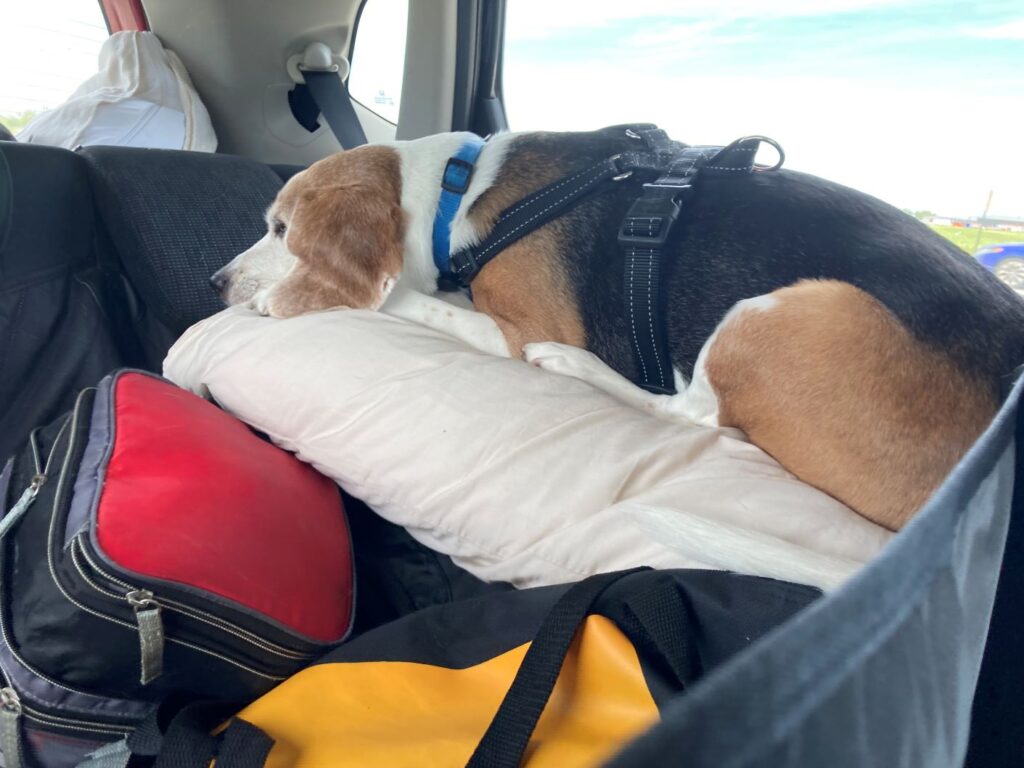
Was it the dream road trip? No. But we weighed the opportunity costs and asked ourselves what was more important—the camper and how we did the trip, or the trip itself and our move to Colorado.
Keep your road trip goals in mind and let them guide your budget and your planning. You can’t always do everything all at once, so prioritize what really matters and what will bring you the most contentment and best memories.
Explore more tips to travel on a budget
Love to travel like us? Check out other ways to spend intentionally and save money while on the road:
